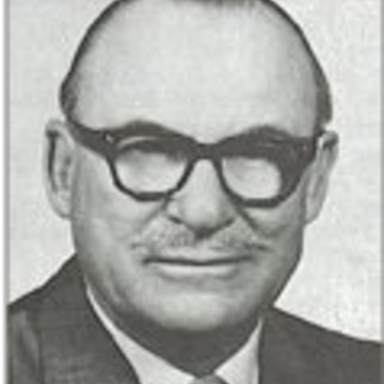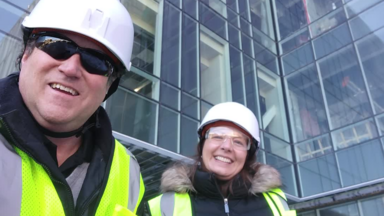In 1925, a small gathering in an Iowa City living room set in motion a century of innovation in speech, language, and hearing sciences. As the American Speech-Language-Hearing Association (ASHA) celebrates its 100th anniversary this year, it’s worth remembering how the University of Iowa became the foundation of a field that has changed millions of lives.
The beginning of speech and hearing innovation at Iowa
It started with just $50. In 1887, G.T.W. Patrick set in motion a century of innovation in human communication research when he spent the entire budget for the Iowa Psychological Laboratory on tuning forks, brain models, and charts.

When Carl Seashore became the lab's director a decade later, he quickly expanded its capabilities. He supervised construction of a pioneering soundproof room in Schaeffer Hall—believed to be the first of its kind—and by 1900 had developed the prototype for what would become the audiometer, laying a foundation for audiology.
The early 1920s brought interdisciplinary collaboration to the forefront. The “Seashore-Orton experiment” united psychology, speech, and medicine to study speech disorders scientifically. This collaborative spirit became a defining feature of Iowa’s program and remains a hallmark of CSD today.
Lee Edward Travis emerged as a key figure in shaping the field. In 1924, he earned what may have been the first PhD focused on speech pathology. His course, “Clinical Psychology of Speech,” introduced the term “speech pathology” into print for the first time.
Travis's influence extended far beyond the laboratory. In 1925, Travis and Seashore hosted a meeting in Travis’s home on Summit Street where attendees founded a scientific association that would later become known as ASHA.
Before leaving Iowa in 1938, Travis mentored 46 doctoral students, many of whom became trailblazers themselves.
Building a national reputation and modern facilities
Under the leadership of directors Charles Strother, Wendell Johnson, and James F. Curtis, Iowa became a destination for graduate students pursuing advanced study in speech and hearing sciences. By 1968, Iowa-trained experts led four of the nation’s five major university speech clinics, and two-thirds of other scientifically oriented programs.
The 1968 opening of the Wendell Johnson Speech and Hearing Center marked a $1.5 million investment in state-of-the-art facilities, including a rare anechoic chamber.
The Department of Communication Sciences and Disorders in the College of Liberal Arts and Sciences influence extends far beyond Iowa City.
Faculty and alumni have held numerous leadership roles in ASHA, including three department figures serving as president by 1965. Research programs like the Cleft Palate Research Program (launched in 1955) and the National Center for Voice and Speech (established in 1990) further reinforced Iowa’s reputation for innovation.
Educating the next generation of professionals
Today, as ASHA celebrates 100 years, CSD continues to push the boundaries of research and clinical education. With top national rankings and a strong tradition of interdisciplinary collaboration, Iowa remains at the forefront of speech, language, and hearing sciences.

This year also marks another historic milestone for the department as it prepares to move from the Wendell Johnson Speech and Hearing Center—its home for more than 50 years—into the state-of-the-art Health Sciences Academic Building (HSAB). The new facility CSD is moving to in 2026 will provide modern spaces for research, teaching, and clinical care, ensuring that Iowa remains at the forefront of innovation in speech, language, and hearing sciences.
To honor the department’s proud history and the role WenJo has played in shaping generations of clinicians and researchers, CSD will host the WenJo Commemorative Event in August 2025. Alumni, faculty, and friends are invited to celebrate the legacy of Wendell Johnson, reflect on their time in the building, and look ahead to the program’s exciting next chapter in HSAB.